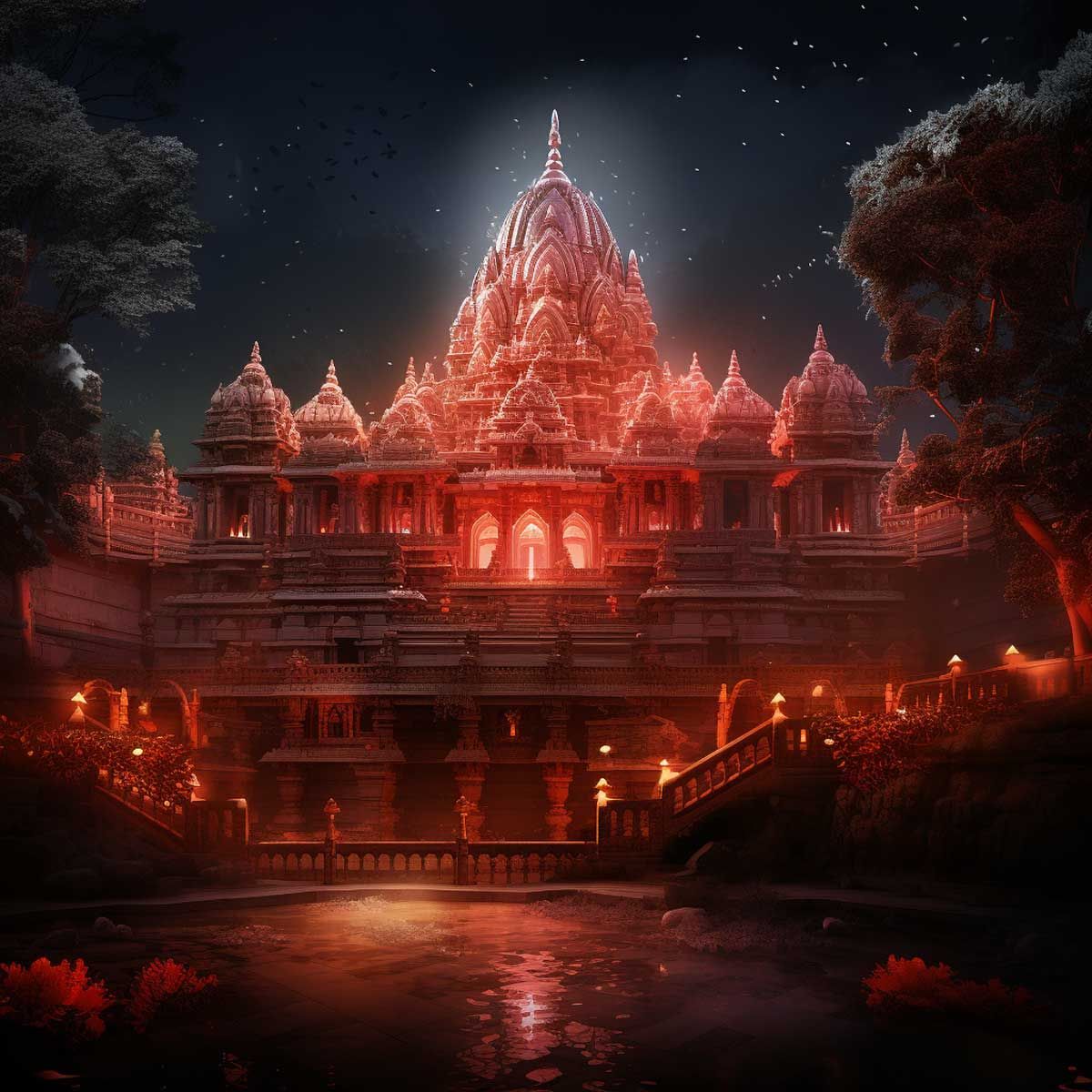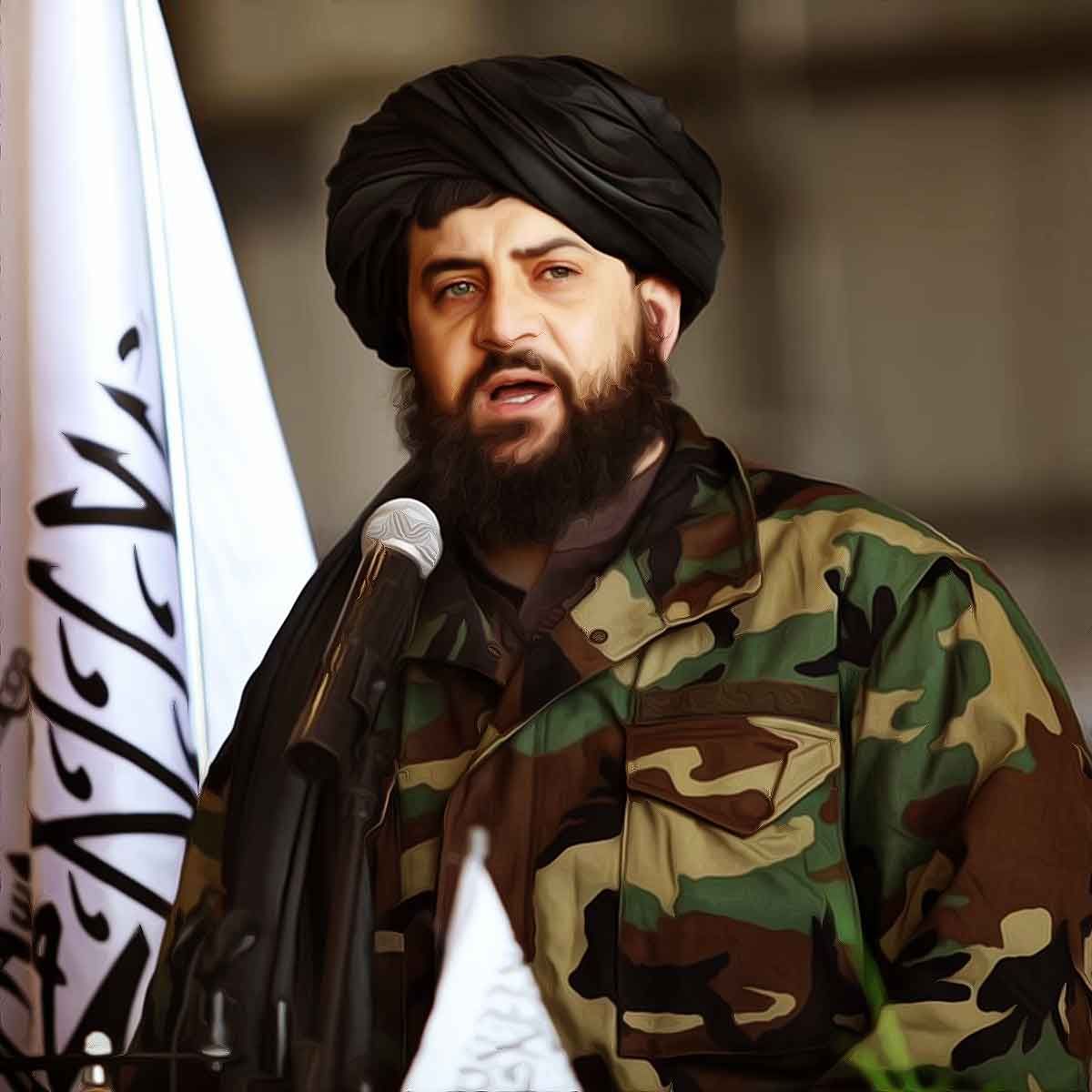MORE COVERAGE
Twitter Coverage
Satyaagrah
Written on
Satyaagrah
Written on
Satyaagrah
Written on
Satyaagrah
Written on
Satyaagrah
Written on
JOIN SATYAAGRAH SOCIAL MEDIA
Explore the intense reactions to Ayodhya's Ram Mandir Pran Pratishtha, from Pakistan's critical stance and Indian left-liberals' outcry, to archaeologist KK Mohammad's call for Muslims to hand over disputed Gyanvapi, Shahi Idgah Structure to Hindus

In a recent development that has caught the attention of many, Pakistan expressed its discontent following the conclusion of the Ram Mandir Pran Pratishtha ceremony in Ayodhya. This response from Pakistan comes at a time when the country is already under scrutiny for its treatment of minorities.
|
The Foreign Ministry of Pakistan issued a statement condemning the construction and the consecration ceremony of the Ram Mandir. The statement reflected deep discontentment, stating, “The centuries-old mosque was demolished on 6 December 1992 by a mob of extremists. Deplorably, India’s superior judiciary not only acquitted the criminals responsible for this despicable act but also allowed the construction of a temple on the site of the demolished mosque.” This criticism comes from a nation where the plight of minorities, including Hindus and Christians, is often highlighted in international forums. Reports of attacks on their places of worship and destruction of idols are not uncommon in Pakistan.
Furthermore, the statement from Pakistan seemed to be aimed at stirring up communal tensions in India. It labeled the Ram Mandir Pran Pratishtha as a result of “growing majoritarianism” in the country. The statement went on to say, “These constitute an important facet of the ongoing efforts for social, economic and political marginalisation of the Indian Muslims.” This claim is juxtaposed against the backdrop of the Ram Mandir's symbolic significance for a large section of the Indian populace.
The Ram Mandir Pran Pratishtha ceremony, a landmark event, marks a significant moment in India's cultural and religious history. It represents a long-cherished dream of many Indians coming to fruition. The ceremony has been a topic of national interest and pride, signifying more than just the construction of a religious structure. It embodies a sense of unity and fulfillment of historical aspirations for countless devotees.
|
In contrast to Pakistan's view, the construction of the Ram Mandir has been seen by many as a step towards cultural restoration and historical justice. The temple stands on a site that holds immense significance for millions of Hindus around the world. Its construction follows a lengthy and complex legal process, culminating in a landmark judgment by India's Supreme Court.
The Pakistani statement has, therefore, been met with criticism from various quarters in India. Many see it as an unwarranted interference in India's internal affairs and a misrepresentation of the country's commitment to secularism and pluralism. The Ram Mandir, for a significant part of India's population, is not just a symbol of religious significance but also a beacon of national pride and cultural identity.
The statement referred to Indian political leaders, noting, “The Chief Ministers of two major Indian states, Uttar Pradesh and Madhya Pradesh, are on record as citing the Babri Mosque’s demolition or inauguration of the ‘Ram Temple’ as the first step towards reclaiming parts of Pakistan.”
|
However, the focus within India was vastly different, with the nation enveloped in a wave of celebration. The mood in India was one of jubilation and cultural pride as people from various walks of life participated in the festivities. The streets echoed with chants of ‘Jai Shri Ram’ following Prime Minister Modi's participation in the Pran Pratishtha ceremony of Ram Lalla at the historic site in Ayodhya. The Ayodhya site, believed to be the birthplace of Lord Ram, had been a point of contention since 1528 AD, when it was claimed that Mughal invaders built a mosque over the ruins of an ancient temple. The Ram Mandir thus symbolizes a restoration of historical and cultural identity for many Indians.
The ceremony in Ayodhya was seen as a moment of vindication and a fulfillment of a centuries-old wish. It represented Lord Ram’s homecoming to his birthsite, a narrative deeply embedded in the hearts of many Indians. The construction of the temple, therefore, was not just about a physical structure but about rectifying historical wrongs and honoring the faith of millions.
Interestingly, Pakistan's criticism of the Ram Mandir event aligns with the stance of certain segments within India. The Indian Left has voiced its opposition to both the construction and the consecration of the Ram Mandir. Prominent left-leaning figures, including Arfa Khanum Sherwani, have expressed their discontent with the Pran Pratishtha ceremony. Their opposition is viewed by many as a differing ideological perspective on the matter, emphasizing the diversity of opinions within India's democratic framework.
|
‘Fall of Secular Nation’: Left-Liberals React to PM Modi's Pran Prathistha of Ram Mandir
Communist leader and former JNU student President, Aishe Ghosh, expressed her dismay over the ceremony, commenting, “22nd January. Fall of a secular nation. Will be remembered.” This statement reflects a sense of loss for what some perceive as the secular fabric of India, marking the event as a turning point in the nation's history.
Arfa Khanum Sherwani, Senior Editor at The Wire, shared her sentiments on Twitter, stating, “The way we imagined India, knew India for many centuries, is dead now.” Her tweet suggests a profound shift in the understanding and identity of India, hinting at an alteration in the nation's long-standing secular tradition.
Mitali Saran, a columnist for the National Herald, took a more critical stance, asserting, “A temple-government, embodied in a self-appointed king-priest who’s trying to convince people that he was chosen by god—the hard launch of a thoroughly unequal country. It’s a crime scene in more ways than one.” Saran's comment points to a perceived merger of religious and political power, expressing concerns over the implications for India's democratic and secular ethos.
|
|
Malayalam director Kamaluddin Mohammed Majeed joined the conversation by posting a picture of the 1976 preamble of the Constitution of India, amended during the Emergency by the Indira Gandhi government. Through this, he seemed to suggest that the construction of the Ram Mandir could be at odds with the constitutional principles of India, raising questions about the country's commitment to secularism.
Despite these varied criticisms, the Pran Prathistha ceremony of the Ram Mandir in Ayodhya stands as a significant moment in the revival and recognition of Hindu civilization. The grand idol of Shri Ram in his childhood form (Baal Swarup) is now a symbol of reverence for over a billion Hindus worldwide. The 22nd of January 2024 marks a pivotal day in the history of Hindu civilization, seen as a correction of a prolonged period of cultural suppression.
The event has been interpreted by many as a reassertion of India's rich cultural heritage, with the Ram Mandir serving as a beacon of Hindu faith and identity. For a vast majority of Hindus, the construction of the temple is not just about reclaiming a physical space but is deeply intertwined with the spiritual and cultural consciousness of the community.
|
|
“Muslims Should Hand Over Disputed Gyanvapi, Shahi Idgah Structure to Hindus,” Says Archaeologist KK Mohammad
KK Mohammad, a retired Regional Director of the Archaeological Survey of India (ASI), has recently made a significant statement concerning two of India's long-standing religious disputes. In an interview with IANS, Mohammad, who has a rich background in archaeology, including his work on the Ram Janmabhoomi excavation, suggested a resolution to the disputes involving the Gyanvapi and Shahi Idgah sites. He expressed, “Muslims should hand over the disputed Gyanvapi and Shahi Idgah land to Hindus.” His suggestion aims to offer a peaceful solution to these disputes, emphasizing reconciliation and respect for Hindu sentiments.
Mohammad's role in the archaeological community is notable, particularly his involvement in the Ram Janmabhoomi excavation. His findings at this site have been instrumental in supporting the existence of a Ram Mandir beneath the then-disputed structure of the Babri mosque, challenging several theories that opposed this view. His advocacy for the Ram Mandir, based on archaeological evidence, highlights his commitment to uncovering and presenting historical truths.
Further, Mohammad's participation in BB Lal's team that excavated the Babri Masjid in 1976 adds to his credibility as an archaeologist with deep insights into India's historical religious sites. His perspectives are grounded in extensive fieldwork and research, contributing significantly to the understanding of these contentious sites.
The Gyanvapi-Shahi Idgah dispute, to which Mohammad refers, involves the claim of five women petitioners seeking permission to worship Hindu deities such as Maa Shringar Gauri, Bhagwan Ganesh, Shri Hanuman, and Nandi, believed to be located within the Gyanvapi mosque complex. The discovery of a Shivling and symbols like the Swastika within the structure in Varanasi in 2022 has further intensified this dispute, adding to the religious and historical significance of the site.
Mohammad's recommendation for the resolution of this dispute calls for a gesture of goodwill and understanding from the Muslim community. He suggests that the Gyanvapi and Krishna Janmabhoomi structures be handed over to the Hindu community, a move he believes could foster communal harmony and respect for Hindu religious sentiments. His statement underscores the importance of Kashi, Mathura, and Ayodhya for Hindus, as these cities are intricately linked with the lives of deities like Bhagwan Shiva, Bhagwan Krishna, and Bhagwan Ram. According to Mohammad, “Muslims have no sentiments for the mosques built here.”
He said, “Even in the walls of the building, there were several depictions of Hindu gods and goddesses that were defaced in many places. We could also find terracotta statues of animals, females, warriors and several such materials.” These findings are significant as they suggest the presence of a Hindu temple at the site prior to the construction of the Babri mosque, offering tangible evidence in the longstanding debate over the site's history.
An interesting fact about the team is that one of its members was Jaisree Ramanathan, who is the wife of senior Congress leader Jairam Ramesh. This detail underscores the diverse backgrounds of the individuals involved in the excavation and highlights the non-partisan nature of archaeological work.
Mohammad also touched upon a contentious issue regarding the publication of the excavation findings. He corroborated reports that Dr. B.B. Lal initially did not intend to reveal the findings to the public. This reluctance changed when communist historians, led by Prof. Irfan Habib, released statements claiming that Dr. Lal and his team had not found anything significant. Mohammad explained, “It was then that Prof Lal was forced to respond and the findings were brought out to the public. Prof Irfan Habib was not an archaeologist and only a historian and he had distorted ideas that led to a major polarisation among the people. However, the crucial evidence was received after the Masjid was demolished in 1992 and not during the excavation your team undertook in 1976.” His account highlights the complex dynamics of historical research and the impact of differing academic perspectives on public understanding.
Additionally, Mohammad discussed a significant discovery: “It was a 12th-century Vishnuharishila inscription that was there under the structure. Critics had earlier stated that it was an 18th-century inscription but they backed out later. In the inscription, it was clearly written about the Mahavishnu who had killed Bali and also killed the man with ten heads. This means Lord Ram and hence it is clear as to who the place belonged to.” This inscription was crucial in establishing the site's connection to Lord Ram, further solidifying the claim of the site being Ram Janmabhoomi.
Expressing his views on the Ram Mandir, Mohammad shared, “Indeed I am happy as a professional archaeologist and that a majestic temple for Lord Ram has come up in Ayodhya. An archaeologist is not a Hindu or a Muslim. I am a professional archaeologist and I am professionally very happy that several years of excavations and scientific findings have given a correct result and a grand temple is coming up. I am happy about this.” His statement reflects the satisfaction of a professional whose work has contributed to a significant historical and cultural revelation.
 |
 Support Us
Support Us
Satyagraha was born from the heart of our land, with an undying aim to unveil the true essence of Bharat. It seeks to illuminate the hidden tales of our valiant freedom fighters and the rich chronicles that haven't yet sung their complete melody in the mainstream.
While platforms like NDTV and 'The Wire' effortlessly garner funds under the banner of safeguarding democracy, we at Satyagraha walk a different path. Our strength and resonance come from you. In this journey to weave a stronger Bharat, every little contribution amplifies our voice. Let's come together, contribute as you can, and champion the true spirit of our nation.
 |  |  |
| ICICI Bank of Satyaagrah | Razorpay Bank of Satyaagrah | PayPal Bank of Satyaagrah - For International Payments |
If all above doesn't work, then try the LINK below:
Please share the article on other platforms
DISCLAIMER: The author is solely responsible for the views expressed in this article. The author carries the responsibility for citing and/or licensing of images utilized within the text. The website also frequently uses non-commercial images for representational purposes only in line with the article. We are not responsible for the authenticity of such images. If some images have a copyright issue, we request the person/entity to contact us at satyaagrahindia@gmail.com and we will take the necessary actions to resolve the issue.
Related Articles
- "A lie with a purpose": At the 45th Prix Européen de l’Essai, controversial author Arundhati Roy amplifies anti-India rhetoric, distorting facts on Godhra, CAA, Article 370, while unabashedly endorsing BBC, Hindenburg, and OCCRP's divisive narratives
- "mein pehley to Musalmaan hoon… If they say Pakistan Murdabad, I will say Pakistan Zindabad," declares Mohammad Akbar Lone, represented by Kapil Sibal in Article 370 abrogation case, stirring a nationwide discourse on allegiance and constitutional loyalty
- Wikipedia dismisses Love Jihad as a conspiracy theory by Hindus, but claims reverse Love Jihad against Muslims is real
- Gujaratis are agitated and are taking PM Modi’s security breach in Congress-ruled Punjab personally: In their hearts, Modi is still ‘their man’
- "Manipulating minds, one tweet at a time": China cunningly exploits global social media, manipulating opinions through a web of deceit, Oxford Internet Institute exposesunchecked cyber onslaught, revealing China's ambitions to control global narratives
- Exposed: Nitasha Kaul's ban from India, justified by her deep ties with anti-India groups & spreading venom, from testifying against India in US Congress to associating with extremist organizations, her actions reveal an agenda far from scholarly debate
- OP Jindal Global University facilitated a hate-mongering ex-prof under the guise of discussing 'History and Politics of the Palestinian Present', who made anti-Hindu remarks, Sameena Dalwai forced students to join the talk and hates ‘Jai Sri Ram’ chant
- Fahad Shah, editor of the prominent Srinagar-based news portal 'The Kashmir Walla' arrested for anti-national activities and sharing provocative content on the social media platform
- "A symphony of anti-India agendas": Rahul Gandhi's camaraderie with Hindumisic author Christophe Jaffrelot in a recent event stirs controversy; the prolific critic of India, BJP & Indian judiciary, notably participated in 'Dismantling Hindutva' conference
- "Karma Strikes": Decade-long patience culminates as Delhi's LG sanctions Arundhati Roy's prosecution for her divisive 2010 speech, with BJP countering Chidambaram's remarks and the case gaining momentum, India's stand against sedition takes center stage
- Why India’s temples must be freed from government control
- Mumbai ATS tortured and forced witness in the 2008 Malegaon blast case to falsely accuse Yogi Adityanath and RSS leaders
- Dangerous plots of Khalistan uprising and Hindu genocide, hurling abuses to Hindu Gods, arrest of Hindus for ‘blasphemy’ when retaliating - The menacing truth of underbelly of Clubhouse
- "Hate is too great a burden to bear": As India strides towards development, IIT Delhi's Prof. Divya Dwivedi incites anger, calling for the wiping out of Hinduism at the global G20 Summit, fostering division rather than appreciating the nation's progress
- "Professor Schooled": OP Jindal University slams an 'activist' for anti-Hindu remarks in a Palestine issue talk, also issuing a stern warning to Professor Sameena Dalwai over discrimination against Hindu students - a bold stand for fairness in academia


























